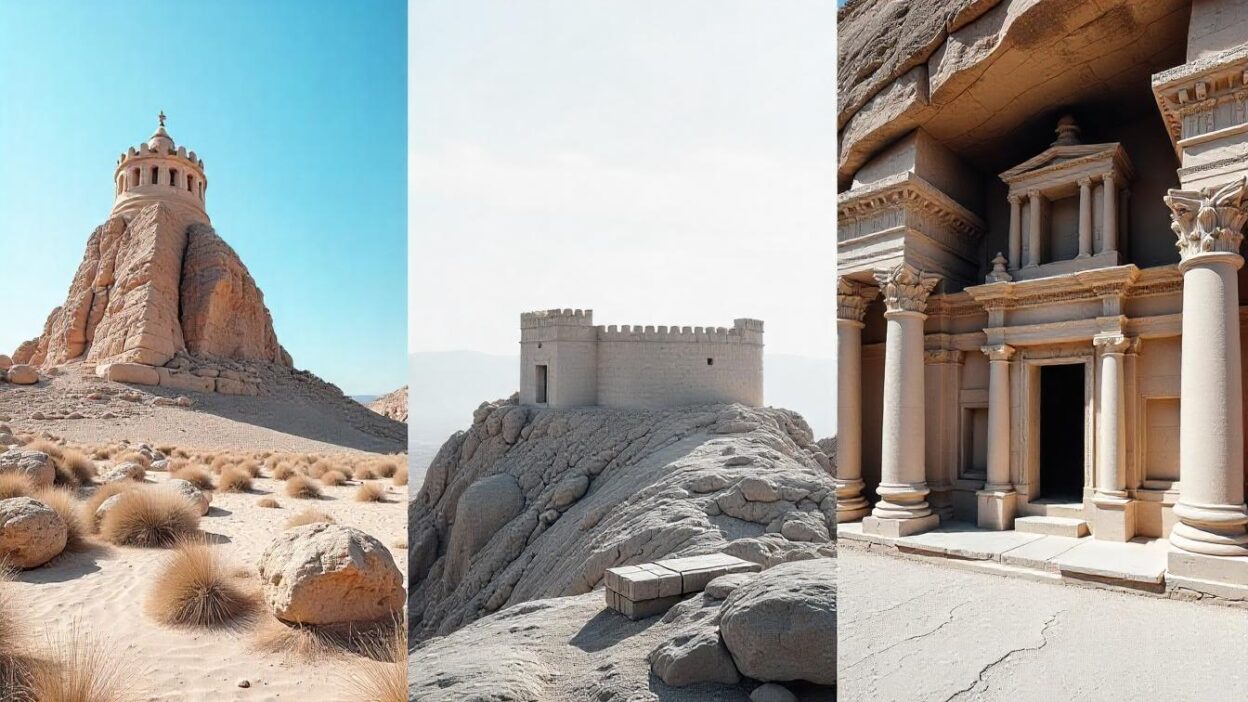Sunday, May 18, 2025
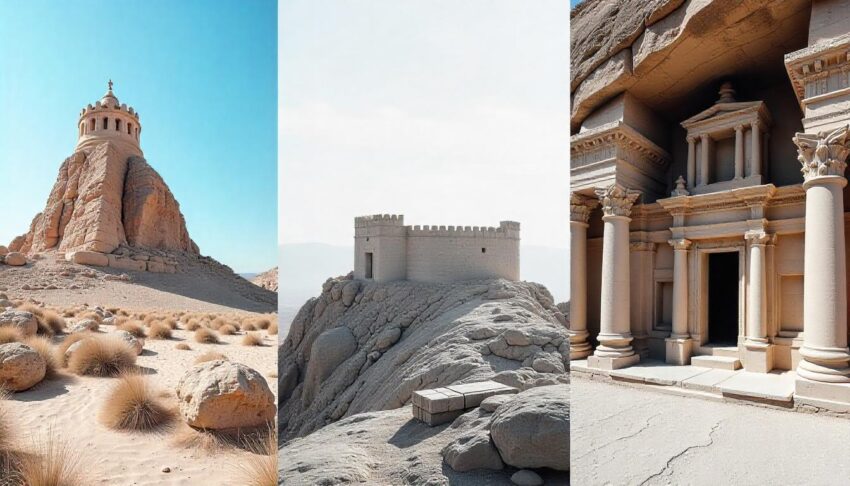
In 2025, Iran has emerged as the most affordable travel destination in the Middle East, driven by a dramatically devalued currency that gives international tourists unmatched spending power. With 1 US dollar equating to over 42,000 Iranian rials, the country offers significantly cheaper accommodations, food, transport, and cultural experiences compared to regional counterparts like Egypt, Turkey, UAE, Saudi Arabia, Qatar, Israel, and Yemen. While other nations in the region grapple with high travel costs, limited accessibility, or luxury-driven economies, Iran delivers rich heritage, vibrant cities, and authentic experiences at a fraction of the price—making it the top value choice for cost-conscious travelers.
Iran: The Cheapest Travel Destination in the Middle East
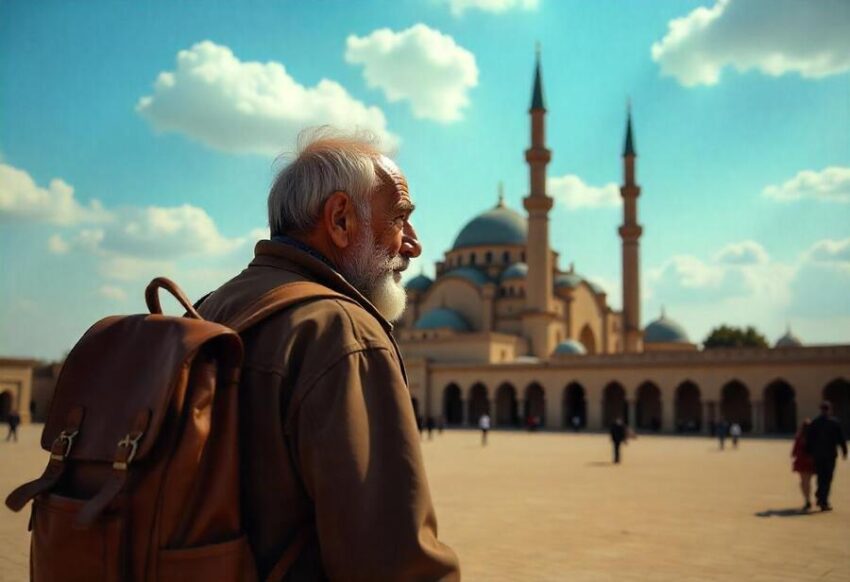
In 2025, Iran stands out as the most affordable travel destination in the Middle East, thanks to its highly favorable currency exchange rates. With 1 US dollar equal to 42,112.50 Iranian rials and 1 euro worth 47,011.05 rials, international tourists can enjoy significant purchasing power. This exchange rate advantage makes Iran a top pick for travelers looking to explore rich culture, stunning landscapes, and historic sites—without draining their wallets.
Whether wandering the vibrant bazaars of Isfahan, exploring the ancient ruins of Persepolis, or strolling through Shiraz’s poetic gardens, visitors consistently find that their money goes much further in Iran than in neighboring countries.
Why Iran Offers Exceptional Value:
- Affordable Accommodations: Travelers can stay in beautifully decorated boutique hotels or even five-star properties at the cost of mid-range rooms elsewhere.
- Dining on a Budget: Authentic Persian cuisine—like kebabs, saffron rice, and stews—costs only a few dollars per meal, even in tourist areas.
- Transport and Entry Fees: Domestic travel by bus, train, or short-haul flights remains inexpensive, and entrance fees to museums and cultural landmarks are a fraction of what one might pay in other regional capitals.
- Souvenir Shopping: Iran’s traditional crafts—hand-woven carpets, copperware, ceramics, and miniature paintings—are not only rich in heritage but also accessible in price due to the strong exchange rate.
Iran’s affordability isn’t its only draw. The country boasts 26 UNESCO World Heritage sites, diverse climates ranging from deserts to forests, and a legacy of hospitality deeply rooted in its culture. Despite ongoing geopolitical complexities, more adventurous travelers are returning, drawn by its reputation for safety, rich traditions, and the opportunity to explore a lesser-visited yet deeply rewarding destination.
This growing wave of budget-conscious travel to Iran marks a clear shift in regional tourism dynamics—positioning Iran as the leading value destination in the Middle East in 2025.
Things to Do in Iran
Tehran
Places to Visit: Golestan Palace, Grand Bazaar, Milad Tower, National Museum of Iran
Things to Do: Ride the metro, shop in traditional bazaars, hike to Tochal Mountain, explore street art
Why It’s Great for Budget Travelers: Incredibly cheap transport, low-cost meals, and affordable museum entry fees.
Isfahan
Places to Visit: Naqsh-e Jahan Square, Sheikh Lotfollah Mosque, Ali Qapu Palace, Khaju Bridge
Things to Do: Explore Persian architecture, enjoy traditional tea houses, walk the historic riverfront
Why It’s Great for Budget Travelers: UNESCO sites and boutique stays at minimal cost; most attractions walkable.
Shiraz
Places to Visit: Nasir al-Mulk Mosque, Eram Garden, Tomb of Hafez, Persepolis (nearby)
Things to Do: Discover ancient ruins, stroll poetic gardens, visit local markets for saffron and spices
Why It’s Great for Budget Travelers: Incredible cultural depth and authentic experiences for a fraction of the cost.
Egypt: Timeless Wonders with Moderate Affordability

Egypt continues to captivate travelers from around the world with its timeless attractions—from the majestic Pyramids of Giza and the Sphinx to the treasures of Luxor, Aswan, and the Nile. However, in the context of 2025’s regional travel economy, Egypt ranks below Iran when it comes to affordability.
With an exchange rate of 1 US dollar = 50.10 Egyptian pounds and 1 euro = 55.93 Egyptian pounds, Egypt offers moderate value for international travelers but doesn’t stretch budgets as far as Iran does.
What Tourists Can Expect:
- Moderate Accommodation Costs: Egypt offers a wide range of lodging, from luxury hotels along the Nile to budget guesthouses in Cairo and Alexandria. Prices are reasonable, though not as dramatically low as in Iran.
- Dining & Street Food: Egypt’s culinary scene is flavorful and cost-effective. Classic dishes like koshari, falafel, and grilled meats are widely available for budget-conscious travelers.
- Attractions with Variable Pricing: While some archaeological sites and museums are affordable, ticket prices for premium experiences—like inside the Great Pyramid or access to the Valley of the Kings—can be relatively high for tourists.
- Tour Packages: Nile cruises and desert safaris are popular but typically cost more than comparable full-day tours in Iran, due in part to strong international demand and higher operating costs.
Egypt’s Value Compared to Iran
While Egypt remains a highly desirable travel destination for its ancient heritage and cultural wealth, its exchange rate offers less of a bargain in 2025 compared to Iran’s vastly devalued rial. Tourists still receive good value overall, but not the ultra-low costs seen in Iran for accommodations, transport, and everyday expenses.
However, Egypt benefits from a stronger tourism infrastructure and more frequent international flights, which can make travel logistics more convenient for global visitors, especially first-timers to the region.
Egypt Guide
Cairo
Places to Visit: Pyramids of Giza, Egyptian Museum, Islamic Cairo, Khan El-Khalili Bazaar
Things to Do: Take a felucca ride on the Nile, shop for local crafts, explore ancient mosques
Why It’s Great for Budget Travelers: Street food and local transport are extremely affordable; history everywhere.
Luxor
Places to Visit: Valley of the Kings, Karnak Temple, Luxor Temple, Colossi of Memnon
Things to Do: Join guided temple tours, take a horse-drawn carriage ride, walk the Nile Corniche
Why It’s Great for Budget Travelers: Rich historical attractions at low entry costs; budget accommodations abound.
Alexandria
Places to Visit: Qaitbay Citadel, Bibliotheca Alexandrina, Pompey’s Pillar, Montaza Palace
Things to Do: Explore Mediterranean beaches, visit Greco-Roman ruins, enjoy seafood by the harbor
Why It’s Great for Budget Travelers: Affordable food and accommodation; laid-back coastal atmosphere.
Turkey: A Popular Destination with Competitive but Rising Costs

Turkey has long been a favorite for travelers seeking a mix of history, culture, coastal escapes, and culinary delights. From the majestic mosques of Istanbul and the thermal terraces of Pamukkale to the fairy chimneys of Cappadocia and the Mediterranean beaches of Antalya, Turkey offers diversity in both experience and budget.
As of 2025, the exchange rate stands at 1 US dollar = 38.86 Turkish lira and 1 euro = 43.46 Turkish lira, making it more affordable than many Western destinations, but still less budget-friendly than Iran.
What Travelers Get for Their Money:
- Accommodation Spectrum: Turkey offers excellent mid-range and budget hotel options. While prices remain cheaper than Western Europe or the Gulf, they’ve risen due to inflation and high tourist demand. Boutique stays in Istanbul or coastal resorts are more expensive than comparable lodging in Iran.
- Food & Drink: Turkish cuisine is a major highlight—kebabs, baklava, meze, and tea culture—are still very reasonably priced, especially outside major tourist zones.
- Public Transport & Domestic Flights: Intercity buses and domestic flights are affordable and efficient, but rising fuel costs and high-season demand can affect pricing. A budget traveler will still find more economical transport options than in the Gulf region.
- Site Entry Fees: Historical landmarks like Hagia Sophia (free to enter), Ephesus, and Topkapi Palace charge fees, but they are relatively modest. Combined with Turkey’s infrastructure and accessibility, the country still offers strong value.
Turkey vs. Iran: A Clear Price Gap
While Turkey delivers excellent travel experiences with reliable services, it has become more commercialized and costlier than Iran in 2025. A dinner for two in Istanbul or a hotel night in Antalya might cost several times what the same traveler would pay in Shiraz or Yazd.
Iran still leads as the cheaper destination, particularly for travelers looking to explore culture-rich cities without the crowds and high costs of more established tourist hubs like Istanbul.
However, Turkey remains an appealing choice for those prioritizing ease of travel, modern amenities, and well-developed infrastructure.
Must visit in Turkey
Istanbul
Places to Visit: Hagia Sophia, Blue Mosque, Grand Bazaar, Topkapi Palace
Things to Do: Cruise the Bosphorus, shop local markets, enjoy traditional Turkish baths
Why It’s Great for Budget Travelers: Wide range of hostel options; many top attractions are free or low-cost.
Cappadocia (Göreme)
Places to Visit: Göreme Open-Air Museum, Love Valley, Uçhisar Castle, underground cities
Things to Do: Hike scenic trails, join pottery workshops, explore cave dwellings
Why It’s Great for Budget Travelers: Natural beauty and adventure without needing luxury spending.
Antalya
Places to Visit: Old Town (Kaleiçi), Hadrian’s Gate, Duden Waterfalls, ancient city of Perge
Things to Do: Swim at Lara Beach, visit ruins, enjoy harborfront cafes
Why It’s Great for Budget Travelers: Great mid-range prices, coastal relaxation, and free outdoor attractions.
UAE: Luxury Defined, But Far from a Budget Travel Option
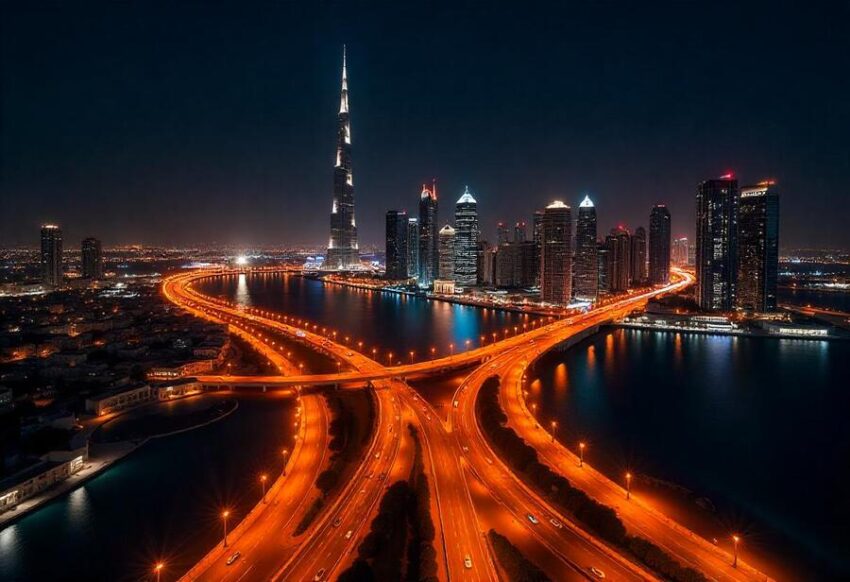
The United Arab Emirates has built its reputation as a playground of luxury, innovation, and futuristic architecture. Dubai and Abu Dhabi, in particular, are known for their record-breaking skyscrapers, man-made islands, opulent hotels, and world-class shopping malls. However, this glamour comes at a cost — and in 2025, the UAE ranks among the most expensive destinations in the region for international travelers.
With an exchange rate of 1 US dollar = 3.67 UAE dirham and 1 euro = 4.11 UAE dirham, the UAE dirham holds strong, offering travelers minimal exchange value advantage.
Travel Cost Highlights:
- High Accommodation Prices: Even budget hotels or Airbnbs in Dubai or Abu Dhabi can cost several times more than similar accommodations in Iran, Egypt, or Turkey. Luxury stays easily run into hundreds or thousands of dollars per night.
- Dining and Entertainment: Eating out in the UAE varies widely—from affordable street shawarma to high-end international dining. However, average costs lean higher than elsewhere in the region.
- Transport: While public transportation is clean and reliable, taxis and rental cars are pricey. Inter-city travel between Emirates often requires private transport or expensive intercity buses.
- Attractions and Experiences: Entry to major attractions like the Burj Khalifa, theme parks, and desert safaris often comes with premium pricing, especially for tourists.
UAE vs. Iran: A Stark Contrast in Affordability
The contrast between Iran and the UAE is significant. In Iran, a full week of travel—including hotel, meals, transportation, and attractions—might cost less than a single night at a mid-range hotel in Dubai.
While the UAE remains a top destination for those seeking luxury, modernity, and convenience, it’s not a cheap travel destination by any measure. For cost-conscious travelers, Iran offers richer value and authenticity at a fraction of the price.
Exploring UAE
Dubai
Places to Visit: Burj Khalifa, Dubai Mall, Al Fahidi Historical District, Jumeirah Beach
Things to Do: Walk the Marina, visit souks, explore free public beaches
Why It’s Great for Budget Travelers: Limited budget options; old Dubai and metro travel offer relative savings.
Abu Dhabi
Places to Visit: Sheikh Zayed Grand Mosque, Louvre Abu Dhabi, Qasr Al Watan, Corniche Beach
Things to Do: Visit cultural sites, enjoy waterfront parks, attend seasonal events
Why It’s Great for Budget Travelers: Costs are high overall, but a few world-class experiences are free or subsidized.
Sharjah
Places to Visit: Sharjah Museum of Islamic Civilization, Al Noor Island, Blue Souk
Things to Do: Explore heritage areas, visit art centers, walk lagoon promenades
Why It’s Great for Budget Travelers: More affordable than Dubai, with rich cultural experiences.
Saudi Arabia: Cultural Transformation with Premium Travel Pricing

Saudi Arabia has been making significant strides to position itself as a major tourism hub in the Middle East. Through its ambitious Vision 2030 strategy, the kingdom has opened its doors wider than ever before—promoting its ancient archaeological sites, Red Sea coastlines, modern mega-projects like NEOM, and religious tourism.
However, this transformation is accompanied by relatively high travel costs, particularly when compared to budget destinations like Iran.
As of 2025, exchange rates sit at 1 US dollar = 3.75 Saudi riyal and 1 euro = 4.18 Saudi riyal, meaning foreign currencies don’t stretch far for most international tourists.
What Travelers Can Expect:
- Accommodation Costs: Hotel prices in major cities such as Riyadh, Jeddah, and Medina are relatively high, especially in international chains. Budget options exist but are limited compared to countries like Egypt or Turkey.
- Dining and Food Culture: Saudi Arabia offers a diverse dining scene, from traditional dishes like kabsa and mutabbaq to international cuisine. However, dining out—especially in tourist-heavy zones—can be expensive.
- Transport and Accessibility: Domestic flights, while frequent, are not always budget-friendly. Intercity train routes like Riyadh to Dammam are modern but priced accordingly. Ride-sharing and car rentals are widely used, but add up quickly.
- Tourism Experiences: Tours of AlUla, the Empty Quarter desert, and Red Sea diving trips are unique but come at premium rates, especially as infrastructure is still developing in many areas.
Saudi Arabia vs. Iran: A Value Divide
While Saudi Arabia offers growing access to once-restricted regions and cutting-edge attractions, the overall cost of travel is high. A traveler looking to experience desert landscapes, historic ruins, and Islamic heritage will spend far more in Saudi Arabia than in Iran.
In contrast, Iran delivers equally rich cultural and historical depth at a fraction of the cost—making it the clearer choice for budget travelers seeking immersive experiences without luxury price tags.
Saudi City Guide
Riyadh
Places to Visit: Masmak Fort, National Museum, Kingdom Tower, Diriyah
Things to Do: Explore heritage districts, shop in traditional markets, view the skyline from sky bridges
Why It’s Great for Budget Travelers: Tourist infrastructure is growing; costs are high but new competition is improving affordability.
Jeddah
Places to Visit: Al-Balad (Old Town), Jeddah Corniche, King Fahd Fountain, Floating Mosque
Things to Do: Walk heritage streets, enjoy the Red Sea coast, visit art installations
Why It’s Great for Budget Travelers: Slightly more affordable than Riyadh, with diverse local cuisine and walkable attractions.
AlUla
Places to Visit: Hegra (Madain Saleh), Elephant Rock, Old Town of AlUla, Maraya Concert Hall
Things to Do: Join desert tours, hike ancient trails, attend festivals
Why It’s Great for Budget Travelers: Entry and tour prices are high, but offers one-of-a-kind experiences.
Qatar: Compact Luxury with High Travel Costs
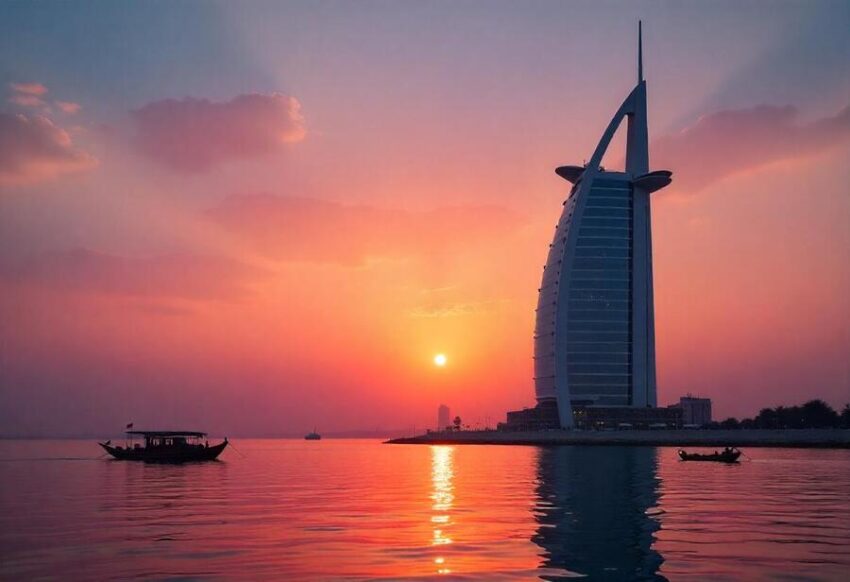
Qatar has rapidly evolved into one of the Middle East’s most prominent luxury travel destinations, especially after hosting the 2022 FIFA World Cup. The capital city, Doha, showcases a striking skyline, modern museums, opulent shopping centers, and world-class hotels. However, for budget travelers, Qatar presents a high-cost environment with limited low-cost alternatives.
As of 2025, the exchange rate remains strong at 1 US dollar = 3.66 Qatari riyal and 1 euro = 4.08 Qatari riyal, providing minimal conversion benefit for international visitors.
What Travelers Experience in Qatar:
- Accommodation Options: Doha’s hospitality landscape is dominated by luxury hotels and upscale chains. While a few mid-range and budget options exist, they are significantly pricier than similar offerings in Iran or Egypt.
- Dining & Daily Costs: Dining out, especially in central Doha, tends to be expensive, with meals at even modest restaurants costing more than in most neighboring countries.
- Transport: Qatar boasts a clean, efficient metro system and widespread taxis, but intercity travel is minimal due to the country’s compact size.
- Tourist Attractions: Qatar excels in offering well-curated experiences such as the National Museum, the Museum of Islamic Art, desert safaris, and dhow cruises. However, many of these come at premium prices.
Qatar vs. Iran: Value in Contrast
Although Qatar’s infrastructure is among the most developed in the region and its tourist services are highly polished, it remains cost-prohibitive for many travelers. Even short stays can be expensive, especially when factoring in lodging, food, and activities.
By contrast, Iran’s dramatically weaker currency allows travelers to enjoy longer stays and richer cultural experiences on a fraction of the budget required for a trip to Qatar. For travelers focused on value for money, Iran remains the superior choice.
Exploring Qatar
Doha
Places to Visit:
- Museum of Islamic Art – A world-renowned collection of Islamic masterpieces housed in an iconic building overlooking the Corniche.
- National Museum of Qatar – Offers immersive storytelling of Qatar’s history, from Bedouin roots to modern-day transformation.
- Katara Cultural Village – A cultural complex featuring theaters, galleries, an open-air amphitheater, and artisan markets.
Things to Do:
- Walk along the Doha Corniche and take in panoramic views of the skyline.
- Wander through the traditional Souq Waqif for spices, textiles, and local street food.
Israel: Rich in History but Heavy on the Wallet

Israel draws millions of travelers each year to its spiritual landmarks, archaeological treasures, and cosmopolitan hubs like Tel Aviv and Jerusalem. While the destination offers deep cultural and religious experiences, it’s also recognized as one of the most expensive countries to travel to in the Middle East.
In 2025, exchange rates remain strong, with 1 US dollar = 3.56 Israeli new shekel and 1 euro = 3.97 Israeli new shekel, making it a costly country for international visitors, especially when compared to budget destinations like Iran.
What Visitors Can Expect:
- High Accommodation Costs: Hotel prices in Tel Aviv, Jerusalem, and even coastal areas like Haifa are on par with major Western cities. Hostels and Airbnb rentals offer some relief but still cost considerably more than comparable stays in Iran or Turkey.
- Dining and Essentials: Eating out in Israel can be expensive, especially in urban centers. A typical restaurant meal can cost two to three times more than in Egypt or Iran. Street food—like falafel and shawarma—is more affordable but still not cheap.
- Transportation and Entry Fees: Public transportation is efficient, but car rentals, fuel, and intercity trains come with steep costs. Popular sites such as Masada, Yad Vashem, or the Dead Sea often have entry or experience-related fees.
- Tourism Infrastructure: Israel’s tourism sector is highly developed, with English widely spoken and a wide range of guided tours and packages available—but these conveniences often come with premium pricing.
Israel vs. Iran: Cost Disparity in Travel
While Israel offers world-class tourism infrastructure and access to some of the most important historical and religious sites on the planet, it’s not well-suited to budget travel. Daily expenses can quickly escalate, and even basic travel essentials—like accommodation and meals—require a significantly larger budget than in Iran.
In contrast, Iran offers similarly rich historical depth, ancient ruins, religious landmarks, and unique culture, all at a fraction of the cost. For travelers prioritizing affordability and cultural immersion, Iran provides a better value proposition than Israel in 2025.
Exploring Israel
Jerusalem
Places to Visit: Western Wall, Church of the Holy Sepulchre, Dome of the Rock, Mount of Olives
Things to Do: Explore religious quarters, join walking tours, visit archaeological parks
Why It’s Great for Budget Travelers: Spiritual and historical depth, but lodging and daily costs are high.
Tel Aviv
Places to Visit: Carmel Market, Old Jaffa, Tel Aviv Museum of Art, Rothschild Boulevard
Things to Do: Relax on beaches, bike the city, explore Bauhaus architecture
Why It’s Great for Budget Travelers: Expensive overall, though free beaches and public parks offer relief.
Haifa
Places to Visit: Baha’i Gardens, German Colony, Stella Maris Monastery, Dado Beach
Things to Do: Ride the Carmelit (subway), explore Mount Carmel, visit street markets
Why It’s Great for Budget Travelers: Slightly more affordable than Jerusalem and Tel Aviv.
Yemen: Culturally Rich but Logistically Challenging for Travelers

Yemen, home to ancient cities like Sana’a and Shibam, has long been admired for its stunning architecture, unique landscapes, and deep historical roots. However, due to ongoing conflict and instability, Yemen is not a mainstream travel destination in 2025, and access remains limited and often discouraged by global travel advisories.
Despite this, its currency is highly devalued, with 1 US dollar = 244.10 Yemeni rial and 1 euro = 271.96 Yemeni rial, theoretically placing it among the cheapest countries in the Middle East in terms of exchange rate value. But practical barriers limit its affordability advantage.
Key Travel Realities:
- Accommodation and Services: While prices for lodging and food would likely be very low by international standards, the conflict has significantly affected infrastructure, consistency of services, and availability of tourism facilities.
- Safety and Accessibility: Most countries advise against all travel to Yemen due to political instability, violence, and humanitarian concerns. International flights are severely limited or nonexistent, and overland access is dangerous.
- Tourism Environment: Organized tourism is minimal or suspended in many regions. Travel insurance coverage for Yemen is often denied, and obtaining entry visas is extremely difficult for most nationalities.
Yemen vs. Iran: A Tale of Two Realities
Although Yemen’s currency suggests it could be a cheap travel destination, the situation on the ground makes safe and comfortable travel nearly impossible for the average tourist. Iran, on the other hand, offers a stable, secure, and accessible travel experience, with incredibly low costs, rich cultural heritage, and robust hospitality infrastructure.
In essence, Yemen remains off the travel map for most of the world, while Iran is stepping into the spotlight as the cheapest viable travel destination in the Middle East for 2025.
Hotspots in Yemen
Sana’a
Places to Visit: Old City of Sana’a, Great Mosque, Al Saleh Mosque (viewed from outside)
Things to Do: Historically: explore ancient architecture, visit UNESCO sites, enjoy local cuisine
Why It’s Great for Budget Travelers: Would be very affordable, but unsafe for travel due to conflict and lack of tourism infrastructure.
Shibam
Places to Visit: Shibam Old Town, mudbrick tower houses, Wadi Hadhramaut
Things to Do: Photograph ancient skylines, explore traditional life
Why It’s Great for Budget Travelers: Travel not advised, despite potential cultural value.
Iran has become the cheapest travel destination in the Middle East in 2025, thanks to its highly devalued currency, offering far greater value for tourists than Egypt, Turkey, UAE, Saudi Arabia, Qatar, Israel, and Yemen. From accommodations to cultural experiences, Iran delivers more for less across every category.
In a region known for its cultural richness and diverse travel offerings, Iran has clearly positioned itself as the most cost-effective destination in the Middle East for 2025. With a highly favorable exchange rate and remarkably low daily expenses, it offers travelers access to historic sites, vibrant cities, and authentic experiences at a fraction of the cost compared to Egypt, Turkey, the UAE, Saudi Arabia, Qatar, Israel, and Yemen. As global tourists increasingly seek value-driven journeys without compromising on culture or depth, Iran stands out as the ultimate budget-friendly gem in the region’s travel landscape.
Tags: Cheap travel destination, Egypt, iran, Israel, Middle East, QATAR, saudi arabia, Tourism news, Travel, travel industry, Travel News, Turkey, UAE, Yemen
